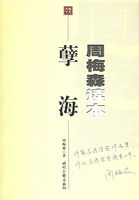All microprocessor designs seek better performance within the limitations of their contemporary technology. In the 70s of 20th century, for example, memory was measured in kilobytes and was very expensive. CISC was the dominant approach because it conserved memory.
In a CISC architecture, there can be hundreds of program instructions—simple commands that tell the system to add numbers, store values and display results. If all instructions were the same length, the simple ones would waste memory. Simple instructions require as little as 8 bits of storage space, while the most complex consume 120 bits.
Variable-length instructions are more difficult for a chip to process, though, and the longer CISC instructions are especially complex. Nonetheless, to maintain software compatibility, modern chips such as Intel’s Pentium III and advanced Micro Devices Inc.’s Athlon must still work with all troublesome CISC instructions that were designed in the 1980s, even though their original advantage—memory conservation—isn’t as important.
In the 1980s, RAM chips got bigger and bigger in capacity while their prices dropped. The emphasis in CPU design shifted to raw performance, and RISC became the new philosophy.
RISC chips use a rather small number of relatively simple, fix-length instructions, always 32 bits long. Although this wastes some memory by making programs bigger, the instructions are easier and faster to execute.
The simplicity of RISC also makes it easier to design superscalar processor-chips that can execute more than one instruction at a time. This is called instruction-level parallelism. Almost all modern RISC and CISC processors are superscalar. But achieving this capability introduced significant new levels of design complexity.
VLIW is the latest way to simplify processors. VLIW chips don’t need most of the complex control circuitry that superscalar chips must use to coordinate parallel execution at runtime. Instead, VLIW chips shift more of that burden onto compilers.
Also, VLIW chips combine two or more instructions into a single bundle or packet. The compiler prearranges the bundles so the VLIW chip can quickly execute the instructions in parallel, freeing the microprocessor from having to perform the complex and continual runtime analysis that superscalar RISC and CISC chips must do.
VLIW chips can cost less, burn less power and achieve significantly higher performance than comparable RISC and CISC chips. But there are always trade-offs. One is code expansion-programs grow larger, requiring more memory. Far more important, though, is that compilers must get smarter. A poor VLIW compiler will have a much greater negative impact on performance than would a poor RISC or CISC compiler.
VLIW isn’t magic bullet, but it’s the new wave in microprocessor design. Within a few years, it’s certain that at least some of your software will be running on VLIW chips.
【New Words】
eclipse
衰落,日蚀
architecture 体系机构
superscalar 超标量体系结构
prearrange 预先安排
2.3 Input/ Output System
A computer is a powerful machine that can do everything people assign it. However the computer can not communicate with people directly. By the aid of input and output devices, a computer and people call "know" each other. Using input devices, people "tell" the computer what it should do and the computer feeds back the result through output devices.
Input and output devices are the interfaces of man and machine. They usually include monitor, mouse, keyboard, printer, disk (hard disk or floppy disk), input pen, scanner, and microphone, etc. Let's consider some input and output devices that are in common use.
MONITOR
The monitor, often called the video display or sometimes just the display, is the TV-like screen on which the computer outputs data. The display also echoes what you type at the keyboard. In essence, the monitor is your portal to the computer.
There are two broad classifications of monitors: monochrome and color. A monochrome monitor displays information in black and white, options include green and amber screens (they are seldom used now), while a color monitor is capable of displaying color, including characters, charts, pictures/imagines, and diagrams.
One term you need to know is cursor. The cursor is a small, possibly blinking perpendicular line or a box, which appears on your monitor at the point where the next output will occur. It pinpoints the "current position" on the screen.
MOUSE
Another common device is the mouse. You operate the mouse by moving it around the surface of your desk. As you move it, a special cursor called the mouse pointer moves around the screen in the same direction as you move the mouse. Programs that support a mouse use the buttons on the mouse to select various options.
KEYBOARD
The keyboard is one of the main input devices for your system. It is the way you will most commonly communicate with a computer; even if your mouse is broken down you can still communicate with your machine. Since the first IBM-PC came out in 1981, there have been two basic styles of keyboards. They are PC -style keyboard and AT style ones. As the Windows operating system is popular, the keyboard now you are using everyday is changed into the keyboard for Windows which has several additional keys to manipulate the Windows very easily.
In addition to these keyboard styles supported by IBM, several independent manufactures have created replacement keyboards for users who want a different layout. Even if keyboards look different from each other, they still contain all the necessary keys. Aside from the letters of the alphabet, the digits, and the punctuation keys found on any typewriter keyboard, your computer's keyboard also contains several other types of keys. Let's take a quick look at some of these special keys.















